
Welcome to seattlesnakes.com! I am David, a snake enthusiast living in Seattle, WA. Many people don't know that Seattle is in fact full of snakes! You just need to know where to find them - they can often be shy and elusive. Some Washington snake species are more common outside of the city limits, in different parts of King County WA, but many types of snakes are indeed common in the more urban parts of Seattle. This guide is meant to help educate you about the beautiful snakes of Seattle, and to help you identify the most common snakes of Seattle, as well as the venomous snakes of Seattle that you should learn to recognize and avoid. If you want more detail, click here for my complete list of ALL snake species in Seattle. Remember the following:
- Most snakes of Seattle are harmless and don't want to encounter you
- Venomous snakes exist but are uncommon in Seattle, Washington
- Snakes eat rats and mice and are a valuable part of the Washington ecosystem
- Never kill a snake - if you leave a snake alone, it will leave you alone.
Common Snake Species in Seattle
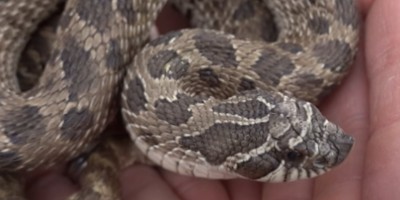 Vancouver Western Hognose:
Appearance: The western hognose is a heavy-build small-sized snake with a modified nose that forms a hog-like look hence its name. Body length ranges from 15 to 20 inches, while the color is either brown or gray.
Habitat: These snakes are proficient burrowers, made possible by their hog-nose. They live in sandy soil areas including semi-deserts, grasslands, and agricultural lands. Additionally, they hunt during the day for toads, frogs, and lizards.
Behavior: The western hognose is a harmless reptile that has zero chances of biting even when threatened. However, it plays dead to confuse the enemy until they leave it, thinking it's already over. This snake species goes dormant during winter and can live without food for close to 3 ½ months before resurfacing in summer.
Vancouver Western Hognose:
Appearance: The western hognose is a heavy-build small-sized snake with a modified nose that forms a hog-like look hence its name. Body length ranges from 15 to 20 inches, while the color is either brown or gray.
Habitat: These snakes are proficient burrowers, made possible by their hog-nose. They live in sandy soil areas including semi-deserts, grasslands, and agricultural lands. Additionally, they hunt during the day for toads, frogs, and lizards.
Behavior: The western hognose is a harmless reptile that has zero chances of biting even when threatened. However, it plays dead to confuse the enemy until they leave it, thinking it's already over. This snake species goes dormant during winter and can live without food for close to 3 ½ months before resurfacing in summer.
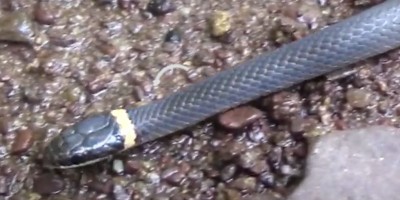 Northwestern Ring-necked Snake:
Appearance: This snake is a smooth-scaled, thin, and small-sized snake. Its body color ranges from gray to black. But the belly is either orange or red with black speckles, exaggerated under the chin.
Habitat: This reptile prefers wet areas such as farmlands, grasslands, and wet meadows. In such places, it feeds on available amphibians, small snakes, insects, and worms.
Behavior: The harmless ring-necked snake is docile and rarely bites. When disturbed, it coils and leaves the bright belly exposed. Additionally, it may smear cloacal contents to camouflage.
Northwestern Ring-necked Snake:
Appearance: This snake is a smooth-scaled, thin, and small-sized snake. Its body color ranges from gray to black. But the belly is either orange or red with black speckles, exaggerated under the chin.
Habitat: This reptile prefers wet areas such as farmlands, grasslands, and wet meadows. In such places, it feeds on available amphibians, small snakes, insects, and worms.
Behavior: The harmless ring-necked snake is docile and rarely bites. When disturbed, it coils and leaves the bright belly exposed. Additionally, it may smear cloacal contents to camouflage.
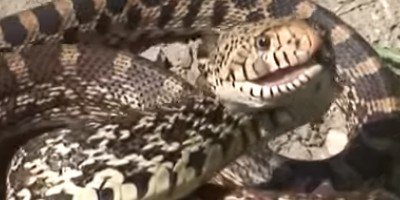 Bull snake:
Appearance: The bull snake can grow up to 54-69 inches long with a sharp head and keeled scaled body. Their back is either dotted in black or dark brown, while the belly is cream with dark spots.
Habitat: Also referred to as the "Great Basin gopher snake," bull snakes occupy riparian lands, grasslands, woodlands, and agricultural farms where it feeds on lizards, birds, and insects.
Behavior: This snake species is a perfect burrower, climber, and swimmer. They reduce their activities such as mating in winter and resume in spring.
Bull snake:
Appearance: The bull snake can grow up to 54-69 inches long with a sharp head and keeled scaled body. Their back is either dotted in black or dark brown, while the belly is cream with dark spots.
Habitat: Also referred to as the "Great Basin gopher snake," bull snakes occupy riparian lands, grasslands, woodlands, and agricultural farms where it feeds on lizards, birds, and insects.
Behavior: This snake species is a perfect burrower, climber, and swimmer. They reduce their activities such as mating in winter and resume in spring.
Venomous Snake Species in Seattle
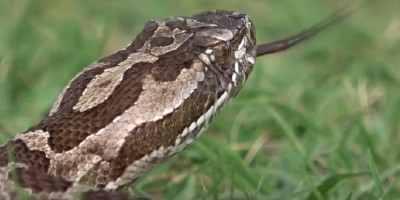 Western Massasauga Rattlesnake:
Appearance: The western massasauga grows up to 60-75cm long. Body coloration is tan with black or brown blotches on the back, which join with a row of alternating spots on the body's sides. Juveniles are less conspicuous than adults but with a better color pattern.
Habitat: This snake is found in moist areas and wetlands, like swamps, rivers, and lakes, giving it an alternative name "swamp rattler." It feeds on small snakes, lizards, and centipedes.
Behavior: The western massasauga is a shy snake that camouflages with vegetation or the ground when it senses danger. Besides, it moves away when threatened and will bite if continuously harassed.
Western Massasauga Rattlesnake:
Appearance: The western massasauga grows up to 60-75cm long. Body coloration is tan with black or brown blotches on the back, which join with a row of alternating spots on the body's sides. Juveniles are less conspicuous than adults but with a better color pattern.
Habitat: This snake is found in moist areas and wetlands, like swamps, rivers, and lakes, giving it an alternative name "swamp rattler." It feeds on small snakes, lizards, and centipedes.
Behavior: The western massasauga is a shy snake that camouflages with vegetation or the ground when it senses danger. Besides, it moves away when threatened and will bite if continuously harassed.
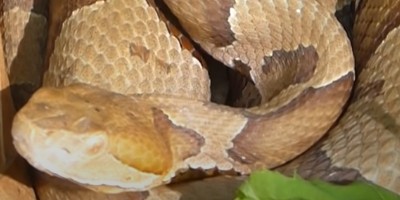 Northern Copperhead:
Appearance: The adult copperhead is 24-36 while the juvenile is 7 to 10 inches long. Their body and head are coppery grays. However, the body has brown, hourglass-shaped bands. Young copperheads are grayer than the adults and have a yellow-like tail.
Habitat: The northern copperhead is found in deserted and rotting wood piles, construction sites, forests, and wetlands. They may also be found on trees or bushes, hunting for birds and other small snakes.
Behavior: Copperheads are active towards evenings. They go dormant in winter and resurface in summer for mating. These snakes are social, sometimes occupying the same den with black rat snakes.
Northern Copperhead:
Appearance: The adult copperhead is 24-36 while the juvenile is 7 to 10 inches long. Their body and head are coppery grays. However, the body has brown, hourglass-shaped bands. Young copperheads are grayer than the adults and have a yellow-like tail.
Habitat: The northern copperhead is found in deserted and rotting wood piles, construction sites, forests, and wetlands. They may also be found on trees or bushes, hunting for birds and other small snakes.
Behavior: Copperheads are active towards evenings. They go dormant in winter and resurface in summer for mating. These snakes are social, sometimes occupying the same den with black rat snakes.
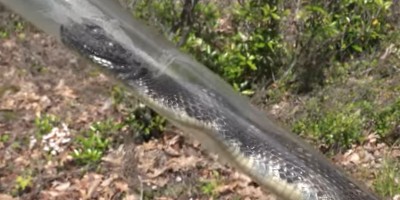 Timber Rattlesnake:
Appearance: An adult timber has a heavily built body with a length between 2.5 to 5 feet or even 7 feet. Additionally, the body is gray to brown with a yellow or orange band along the back.
Habitat: The timber rattlesnake is found under rocks, in forests, wetlands, and agricultural fields. They hunt for rodents and chipmunks in their dens and follow prey if it escapes using its odor.
Behavior: Timbers go dormant in winter and resurface in summer. They are social reptiles that may hibernate together with copperheads and black rat snakes.
Timber Rattlesnake:
Appearance: An adult timber has a heavily built body with a length between 2.5 to 5 feet or even 7 feet. Additionally, the body is gray to brown with a yellow or orange band along the back.
Habitat: The timber rattlesnake is found under rocks, in forests, wetlands, and agricultural fields. They hunt for rodents and chipmunks in their dens and follow prey if it escapes using its odor.
Behavior: Timbers go dormant in winter and resurface in summer. They are social reptiles that may hibernate together with copperheads and black rat snakes.
If you're unsure, you can email me a photo of the snake at info@seattlesnakes.com and I will email you back with the snake's species. If you found a snake skin, read my Found a Skin? page, and you can email me a photo of the skin, and I'll identify the snake for you. If you need professional Seattle snake removal help, click my Get Help page, or see the below website sponsor I found, who provides that service.
Remember, the term is not poisonous snakes of Seattle, it's venomous snakes of Seattle. Poison is generally something you eat, and venom is injected into you. That said, dangerous snakes are very rare in Seattle. The few venomous snakes of King County are rarely seen. But they are commonly misidentified, so learn about all the snake species of Seattle in order to correctly identify them. These snakes are usually also found in the surrounding towns of Kirkland, Bellevue, Kent, Renton, Redmond, Federal Way, Issaquah, Shoreline, Burien, Enumclaw, Maple Valley, Sammamish, Tukwila, Mercer Island, Snoqualmie, Woodinville, Vashon, North Bend, SeaTac, Des Moines, White Center, Kenmore, Skykomis, Clyde Hill, Lake Forest Park, Black Diamond, Covington, Fall City, Carnation, Normandy Park, Newcastle, Duvall, Algona, Bryn Mawr-Skyway, Medina, and the surrounding areas.
Read our article about:
Do snakes live in holes?
seattlesnakes.com domain and hosting costs made possible by the generous support of this sponsor:
